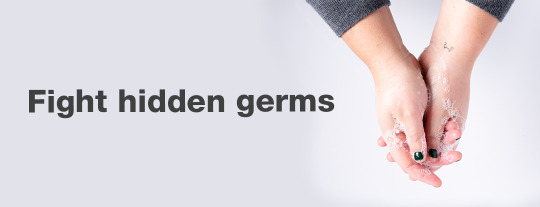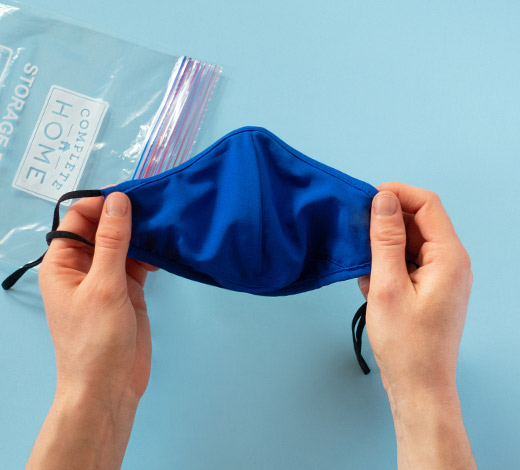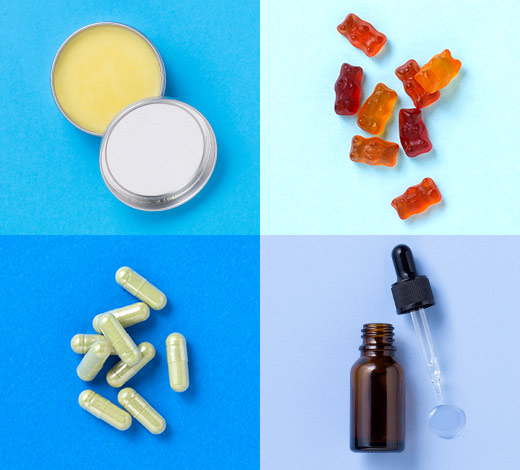
Germs can spread when an infected person coughs or sneezes. Tiny droplets move through the air and get into the mouths or noses of people who are close by. Germs can also live on surfaces, such as cell phones, doorknobs and counter tops, for two hours or longer, and can spread when people touch these surfaces and then touch their mouth, eyes or nose. You can stop the spread of germs and lower your chance of getting sick by washing your hands often, keeping surfaces clean, getting vaccinated and taking other protective actions.
Wash your hands
One of the best ways to defend yourself against potentially harmful germs is to wash your hands often and thoroughly. Follow these steps to clean your hands well:
- Wet your hands with clean, running water.
- Apply soap and rub your hands together. Make sure to get the backs of your hands, between your fingers and under your fingernails.
- Continue to scrub your hands for about 20 seconds.
- Rinse your hands under running water.
- Dry your hands with a clean towel or air dry them.
Wash your hands at these times to reduce your chance of getting sick and decrease the spread of germs:
- After using the bathroom
- Before, during and after preparing food
- Before eating
- Before and after caring for someone who is sick
- Before and after treating a wound
- After changing a diaper or cleaning a child who has used the bathroom
- After coughing, sneezing or blowing your nose
- After touching an animal, animal waste or animal food
- After handling garbage
When you don’t have access to clean, running water, using an alcohol-based hand sanitizer that contains at least 60% alcohol can reduce the number of germs on your hands. However, using a hand sanitizer isn’t as effective as handwashing. Hand sanitizers may not remove all germs, and they don’t work well whBut en hands are visibly dirty or greasy.
Clean and disinfect surfaces
When someone in your house has an infection, such as a cold or the flu, it’s important to clean and disinfect surfaces and other frequently touched objects. Cleaning physically removes germs and dirt with soap and water. It doesn’t necessarily kill germs, but it reduces the chance of spreading infection. Disinfecting uses chemicals, such as chlorine compounds like household bleach, to kill germs. Disinfecting doesn’t always remove dirt from surfaces, so it’s best to clean and then disinfect. While cleaning and disinfecting keyboards, doorknobs, light switches and other frequently touched surfaces in your home is a good place to start, don’t forget about other items you touch often, like cell phones. One study found that cell phones carry ten times more bacteria than most toilet seats.
Stay up-to-date on vaccines
There are vaccines for many contagious diseases, including the flu, pertussis (whooping cough) and pneumonia. According to the Centers for Disease Control and Prevention (CDC), getting the vaccines your health care provider recommends can reduce your risk of getting sick and help keep illnesses from spreading to others.
Take other preventive actions
- Other actions can also reduce the spread of germs. Follow these tips:
- Limit close contact with people who are sick, and when you’re sick, lessen contact with others.
- Avoid touching your mouth, eyes or nose.
- Cover your mouth and nose with a tissue when you cough or sneeze. Then throw the tissue away and wash your hands.
- Stay home when you’re feeling under the weather. If you have flu symptoms, such as fever above 100°F, chills, and body aches and pains, the CDC recommends that you stay home for at least 24 hours after your fever breaks. (Your fever should be gone for at least 24 hours without using fever-reducing medicines.)
Germs lurk everywhere, and while most germs are harmless, some can make you sick. Defend yourself against potentially harmful germs by taking everyday preventive actions, such as washing your hands often, cleaning and disinfecting surfaces, avoiding close contact with people who are sick and staying up-to-date on recommended vaccines.
Clinically reviewed on 3/20/2020
Sources:
“Understanding how infectious diseases spread,” Centers for Disease Control and Prevention. Web. 6 Nov 2018.
https://wwwnc.cdc.gov/travel/page/infectious-diseases
“How to clean and disinfect schools to help slow the spread of the flu,” Centers for Disease Control and Prevention. Web. 6 Nov 2018.
https://www.cdc.gov/flu/school/cleaning.htm
“When and how to wash your hands,” Centers for Disease Control and Prevention. Web. 6 Nov 2018.
https://www.cdc.gov/handwashing/when-how-handwashing.html
“Everyday preventive actions that can help fight germs, like the flu,” Centers for Disease Control and Prevention. Web. 6 Nov 2018.
https://www.cdc.gov/flu/pdf/freeresources/updated/everyday-preventive-actions-8.5×11.pdf
“Influenza (flu): Preventive steps,” Centers for Disease Control and Prevention. Web. 6 Nov 2018.
https://www.cdc.gov/flu/consumer/prevention.htm
“Germs: Understand and protect against bacteria, viruses and infection,” Mayo Clinic. Web. 6 Nov 2018.
https://www.mayoclinic.org/diseases-conditions/infectious-diseases/in-depth/germs/art-20045289
Ulger F, Esen S, Dilek A, Yanik K, Gunaydin M, Leblebicioglu H. Are we aware how contaminated our mobile phones with nosocomial pathogens? Annals of Clinical Microbiology and Antimicrobials. 2009;8:7.
https://ann-clinmicrob.biomedcentral.com/articles/10.1186/1476-0711-8-7
“Why your cell phone has more germs than a toilet,” The University of Arizona. Web. 6 Nov 2018.
https://cals.arizona.edu/news/why-your-cellphone-has-more-germs-toilet
“2011 NSF International household germ study,” The Public Health and Safety Organization. Web. 6 Nov 2018.
http://www.nsf.org/newsroom_pdf/2011_NSF_Household_Germ_Study_exec-summary.pdf
“Safeguarding our health: Vaccines protect us all,” National Institutes of Health. Web. 8 Nov 2018.
https://newsinhealth.nih.gov/2016/07/safeguarding-our-health
“Get vaccinated,” Association for Professionals in Infection Control and Epidemiology. Web. 8 Nov 2018.
http://professionals.site.apic.org/protect-your-patients/get-your-shots/
“Protect yourself with vaccination,” Centers for Disease Control and Prevention. Web. 8 Nov 2018. https://www.cdc.gov/features/adultvaccinations/index.html


